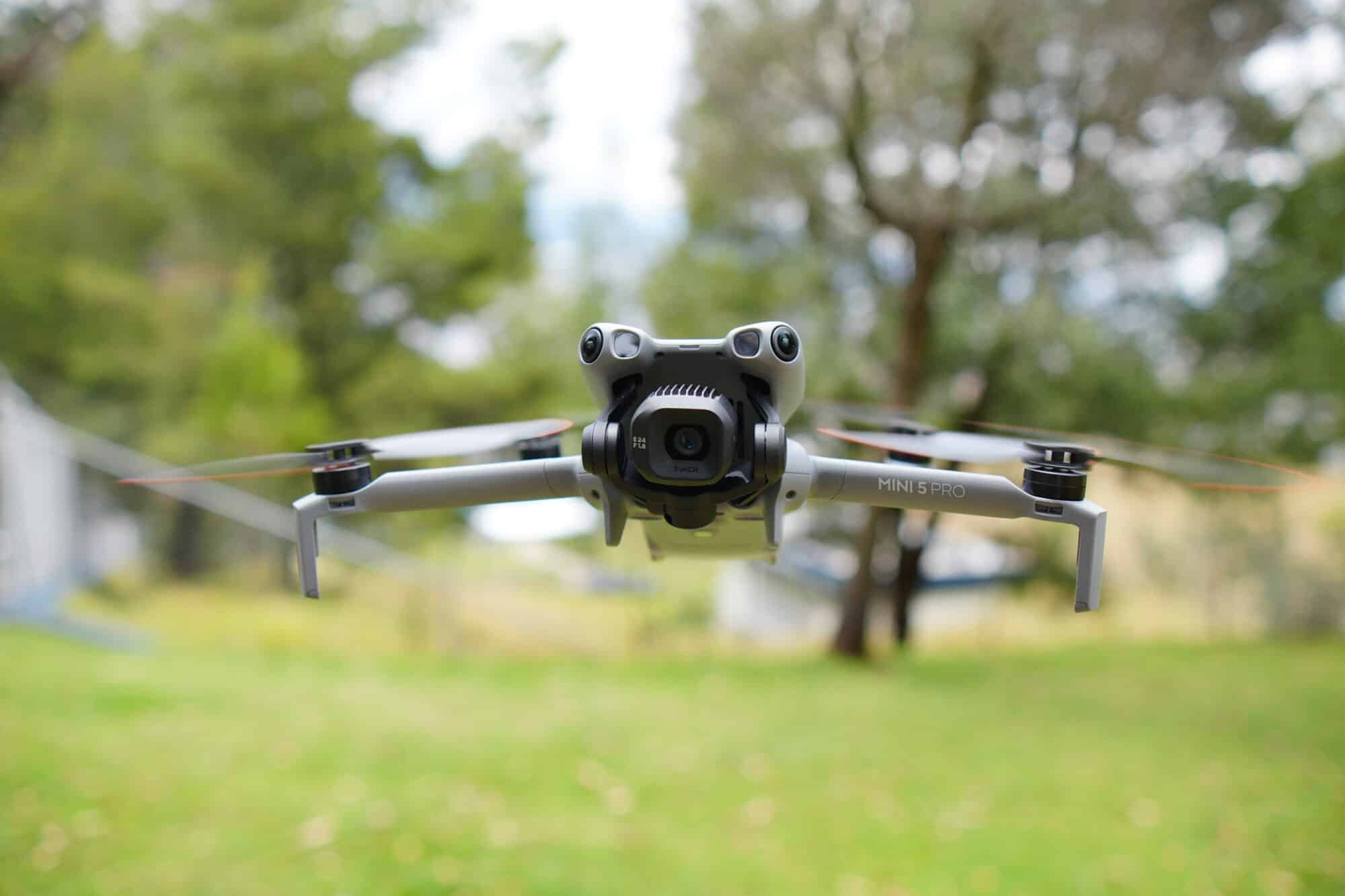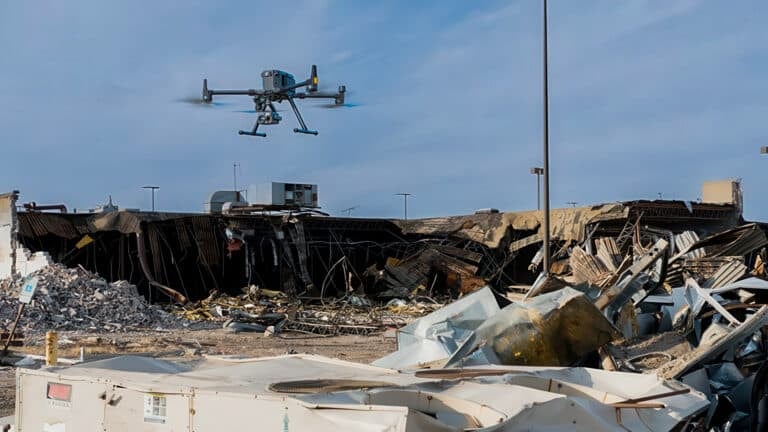DJI Mini 5 Pro New Lidar Sensors: Do’s and Dont’s

Hey dear pilots! Good morning and a better start to this week! I’ve been flying for some time now with the lovely, gorgeous, and technically proficient DJI Mini 5 Pro, and I’d love to discuss some very important aspects of its new LiDAR sensors. This groundbreaking technology represents a significant leap forward in consumer drone safety and navigation capabilities, particularly impressive for a drone in this weight class.
How LiDAR works?
LiDAR works by emitting short pulses of infrared laser light from an emitter toward potential obstacles or surfaces. When the light hits an object, it reflects back to a sensor on the device. The system measures the time it takes for the light to travel to the target and return—a principle known as time-of-flight. Since the speed of light is constant, the distance to the object is calculated using the formula: Distance = (Speed of Light × Time of Flight) / 2.
This process repeats rapidly, allowing the sensor to build a real-time 3D map of the surroundings by detecting distances to multiple points. On drones like the Mini 5 Pro, this enables precise detection of obstacles such as buildings, trees, thin branches (as small as approximately 1 cm in diameter), or even glass surfaces, which might be challenging for traditional camera-based systems. The sensor operates independently of ambient lighting, making it reliable in varied conditions—from bright daylight to near darkness.
All this theory is perfect, but what about real-world tests?
In operation, the LiDAR proactively scans ahead during flight, detecting objects along the flight path and enabling the drone to stop, hover, or reroute automatically. This is especially useful during the automated Return to Home function—the most advanced implementation I’ve ever tested on any consumer drone.
Usually, with previous drone models, RTH flights would occasionally result in crashes during landing, particularly in complex environments. One special test I conducted yesterday really put this system through its paces: I took off from a rooftop and flew through a window to capture some aerial views of the city. The tricky part was that the home point was marked inside the building. Hypothetically, when the drone returns, it should fly back until it hovers over the GPS home point and then descend to land. If it had done that in this scenario, it would have landed on the ceiling of the room.
But not anymore.
Instead, the drone remembered the flight path, and when it approached my location, rather than simply descending vertically, it executed a smooth flight maneuver and entered through the same window I had used to start the flight. The precision and spatial awareness demonstrated here were genuinely impressive.
Magic? No. LiDAR
Of course, the LiDAR sensors are the protagonists here. The 360-degree fisheye cameras alone wouldn’t be sufficient to execute such delicate maneuvers that allowed the drone to navigate back through a window while following its original flight path. The combination of visual positioning and laser-based distance measurement creates a robust navigation system that excels in challenging scenarios.

Additionally, these LiDAR sensors are excellent for night operations (functioning in conditions under 1 lux, according to DJI). They operate similarly to submarine sonar—rather than relying on visual sensors that need adequate lighting, they “see” with laser pulses. This means they don’t require much ambient light to function effectively, making the Mini 5 Pro a genuinely viable option for low-light and nighttime operations where obstacle avoidance is critical.
Are They The One For All Definitive Solution?
Absolutely not. Don’t get me wrong—they’re an absolutely fantastic piece of technology, and having this advanced functionality on a sub-249-gram drone is a genuine game-changer for the industry. However, can they detect the most feared enemy of all drones?
Yes, I’m talking about wires—those nearly invisible hazards that lie in wait, especially if you’re conducting urban, paid flights to showcase a location or property. Unfortunately, based on my tests, as you can see here:
And yes, it was a little frustrating to see that even in plain daylight, my drone didn’t send me even a small warning about the wire. The LiDAR system, impressive as it is, struggled to detect this thin obstacle—a limitation that pilots need to be aware of when operating in environments where power lines or cables may be present.
DroneXL’s Take on the DJI Mini 5 Pro
I really need to continue testing the drone in more situations and different flight modes (but I can assure you: I wasn’t flying in Sport mode during these tests-obstacle avoidance was fully active).
Perhaps what’s needed is a thicker wire for the drone to detect and brake in time, or maybe firmware updates will improve detection capabilities over time.Let’s be clear: this is a really demanding test scenario that pushes the boundaries of what we should reasonably expect from consumer drone technology.
Despite this limitation, the Mini 5 Pro remains the best DJI drone I’ve ever flown in terms of price-to-performance ratio. The LiDAR system represents a significant advancement in obstacle avoidance, even if it’s not perfect in every scenario.l’II keep you updated with more technical insights on this little beast as I continue putting it through its paces!
Discover more from DroneXL.co
Subscribe to get the latest posts sent to your email.
Check out our Classic Line of T-Shirts, Polos, Hoodies and more in our new store today!

MAKE YOUR VOICE HEARD
Proposed legislation threatens your ability to use drones for fun, work, and safety. The Drone Advocacy Alliance is fighting to ensure your voice is heard in these critical policy discussions.Join us and tell your elected officials to protect your right to fly.
Get your Part 107 Certificate
Pass the Part 107 test and take to the skies with the Pilot Institute. We have helped thousands of people become airplane and commercial drone pilots. Our courses are designed by industry experts to help you pass FAA tests and achieve your dreams.

Copyright © DroneXL.co 2025. All rights reserved. The content, images, and intellectual property on this website are protected by copyright law. Reproduction or distribution of any material without prior written permission from DroneXL.co is strictly prohibited. For permissions and inquiries, please contact us first. DroneXL.co is a proud partner of the Drone Advocacy Alliance. Be sure to check out DroneXL's sister site, EVXL.co, for all the latest news on electric vehicles.
FTC: DroneXL.co is an Amazon Associate and uses affiliate links that can generate income from qualifying purchases. We do not sell, share, rent out, or spam your email.




















“sub-249-gram drone”*
*Maybe, but at least 50% probably not… assuming a standard bell curve distribution of weight variance on +/- 4g.
Great article. Well written and to the point.